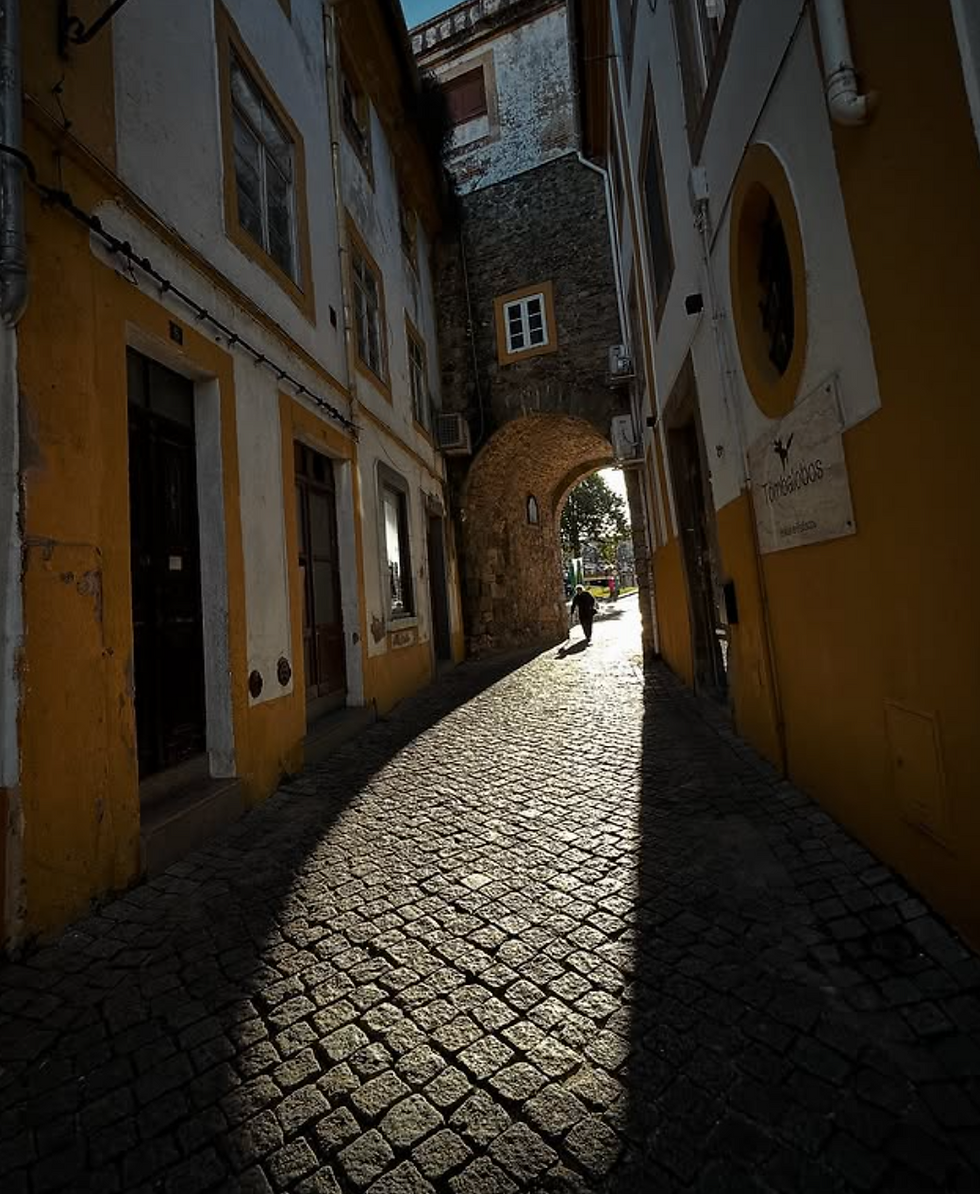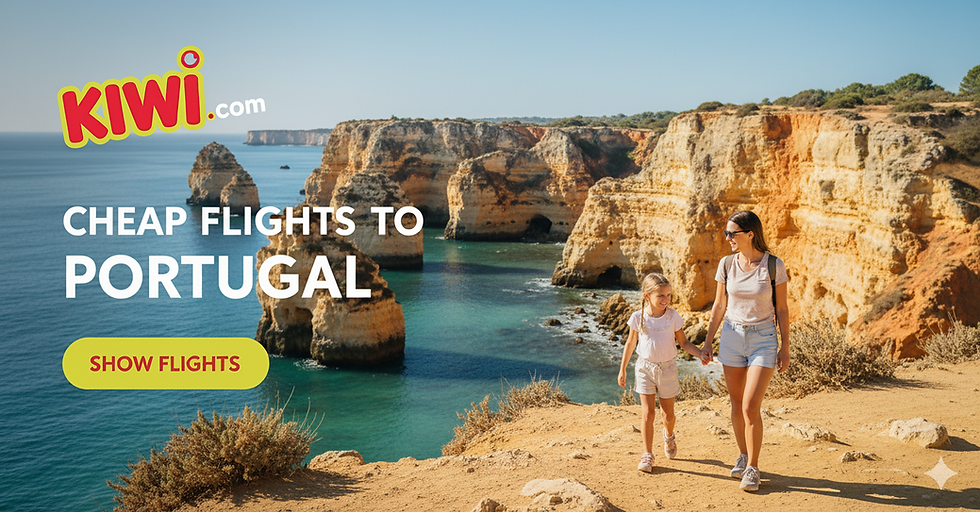Explore Portalegre, Portugal: History and Culture Guide
- Micah

- Jul 9, 2025
- 6 min read
Updated: Sep 5, 2025

Key Takeaways About Visiting Portalegre, Portugal
Where it is: Portalegre sits in Portugal's Alentejo region, near the Spanish border, surrounded by the São Mamede mountains.
Why go: It’s quieter than Lisbon or Porto, packed with history, medieval streets, and a huge tapestry-making tradition.
Top sights: Portalegre Castle, Sé Cathedral, Museu da Tapeçaria (Tapestry Museum), and panoramic spots like the Santa Luzia lookout.
Getting there: Fly into Lisbon (2 hours away) or Badajoz, Spain (1 hour). Buses and trains connect from major cities, though driving’s simplest.
Nearby gems: Day trips to hilltop villages like Marvão (30 mins) or Castelo de Vide (25 mins) are easy.
Eat & drink: Try Alentejo wines at vineyards like Casa da Urra, plus regional dishes like migas (bread-based sides) or açorda (garlic soup).
So, Why Should Portalegre Be on Your Portugal List?
Okay, let's be real – you’ve heard of Lisbon, Porto, the Algarve. But Portalegre? Nah, not so much. And that’s kinda the point. This place ain’t crowded with selfie sticks or souvenir shops hawking plastic knickknacks. It’s where Portugal feels old, genuine, a bit secret. Tucked right up against Spain in the Alto Alentejo, it’s wrapped by the Serra de São Mamede mountains – so the air’s fresher, the views stretch for miles, and you gotta slow down. People here still nod "bom dia" when you pass ’em.
It’s got layers, this town. Romans hung out here way back – they called their spot Ammaia, ruins still nearby. Then came knights, convents, and kings squabbling over who owned what. Portalegre got its city title in 1550, thanks to King João III. Back then, it was buzzing with silk makers and weavers – a tradition that still lives in those famous tapestries you’ll see everywhere. Today? It’s the capital of its own district, though it’s Portugal’s least populated one. That means space. Quiet. Stars at night you actually see. If you’re tired of queues and crowds, this spot’s a reset button.
Getting Here: No Direct Flights, But Worth the Trek
Portalegre’s tucked away, no big airport right there. But reaching it? Not hard, just part of the adventure.
By Air:
Lisbon Airport (LIS) is your main gateway. About 157 km away. From there, hop a bus (Rede Expressos runs direct routes; ~4 hours, €15-20) or rent a car (highway A6 > IP2; ~2 hours).
Badajoz Airport (BJZ) in Spain is closer (just 69 km!). Only catch? Fewer flights, mostly from Madrid. If you find one, it’s a quick 1-hour drive across the border.
By Bus: Direct coaches from Lisbon (Sete Rios station), Évora, even Porto. Comfortable, affordable, drops you downtown.
Train: Portalegre’s train station connects via Linha do Leste, but service is slower. From Lisbon (Entrecampos), change at Abrantes. Scenic? Yes. Fast? Not really.
Driving: Simplest if you wanna explore. From Lisbon: A6 > IP2 (~2 hrs). From Porto: A1 > A23 > IP2 (~4 hrs). Roads are smooth, traffic light.
Pro tip? If you fly into Lisbon, maybe spend a day there first. Grab a pastel de nata, see the Jerónimos Monastery, then head east. The shift from city buzz to Alentejo’s calm is pretty magic.

Must-Do Things Right in Portalegre City
Don’t rush. This town’s best wandered without much plan. Start at the Rossio square – that fountain’s perfect for people-watching. Then just get lost. Peek into churches, spot those wrought-iron balconies. Here’s what you gotta hit:
Portalegre Castle (Castelo de Portalegre):Built way back in the 13th century by King Dinis. Wars happened here – sieges, battles with Spain. Climb the ramparts. You’ll see the whole city, those red roofs, and the mountains hugging everything. Inside? A tiny museum with old swords and armor. Gives you chills thinking bout knights stomping around here.
Sé Cathedral:Hard to miss – twin bell towers poke above the skyline. Built starting 1556, it’s mostly Renaissance outside but Baroque explosions inside. Gold leaf, painted tiles (azulejos), carved wood everywhere. The sacristy? Mind-blowing. Chests made from jacaranda wood, more gold... feels royal.
Convento de São Bernardo:Looks serious from outside. Inside? Peaceful cloisters, a marble fountain, crazy detailed doorway carvings. Founded in 1518 for nuns "without dowry". Check out the tomb of Bishop Jorge de Melo – fancy enough for a king, sculpted by a French artist.
Santa Luzia Lookout (Miradouro de Santa Luzia):Walk uphill, catch your breath. The view? Rolling hills, olive groves, white villages dotted far off. Sunset here turns everything gold. Bring a snack, sit awhile. Photos don’t do it justice.
Baloiço de Portalegre (The Swing) - "Carreiras sem fim":Found it! That Insta-famous swing perched high over the plains. Gentle push... and you’re floating above Alentejo’s patchwork landscape. Cornfields, cork oak forests, maybe a hawk circling below. Pure magic spot.

The Tapestry Museum (Museu da Tapeçaria de Portalegre - Guy Fino): Why It’s Special
This ain’t your grandma’s wall hanging. Portalegre’s tapestries are art. Famous worldwide. The museum’s inside a noble family’s old mansion (Caldeira Castelo-Branco, 18th-century vibes). Two bits to it:
The How: They show how these tapestries get made. A unique stitch – tight, almost like painting with wool. Artists like Jean Lurçat designed them! Skilled weavers here still do it by hand. Watch ’em work if you’re lucky.
The Art: Walk rooms filled with decades of tapestries. Huge, colorful scenes – myths, landscapes, abstract stuff. Feels like a gallery, not a craft shop. Some take months to finish. You start seeing why Portugal treasures this place.
Insider bit: Check for workshops. Sometimes you can try a tiny weave yourself. Way harder than it looks! Kids under 14 get in free too.

Fuel Up: Eating & Drinking Like a Local
Alentejo feeds you well. Hearty, simple, delicious. In Portalegre:
What to Eat:
Migas: Not crumbs! Fried bread mash with garlic, olive oil, often topped with pork or cod. Comfort food heaven.
Açorda Alentejana: Garlicky bread soup with poached egg and coriander. Sounds odd? Tastes amazing.
Queijo de Serpa: Sharp, creamy sheep cheese. Perfect with a crusty roll.
Where to Eat:
Solar do Forcado: Cozy spot near the castle. Think grilled lamb, local wines, friendly chatter.
O Escondidinho: Tiny place, big flavors. Their porco preto (black pork) is legendary.
Wine Time (Vinho):Alentejo grows killer grapes. Drive 15 mins to Casa da Urra vineyard. Tour their cellars, taste robust reds overlooking the vines. Or head to Reynolds Wine in Monforte (~17 miles) – winemaker Nelson Martins knows his soil. Sip, savor, maybe buy a bottle for later.
Beyond the City: Day Trips You Can’t Skip
Got a car? Good. These spots nearby are unreal:
Marvão (30 mins):A village crammed on a razor-thin mountain ridge. Walls cling to cliffs. Wander cobbled lanes, up to a castle that feels like eagles’ nest. Views? Spain on one side, Portugal rolling away forever on the other. Grab lunch at Café Fria – terrace hangs over the void.
Castelo de Vide (25 mins):Like Marvão’s gentler cousin. White houses, flower boxes bursting red. Has its own castle, but the Jewish Quarter is soulful – narrow lanes, ancient synagogue. Feels frozen centuries back.
Serra de São Mamede Natural Park:Right on Portalegre’s doorstep. Hike trails through cork forests, spot deer or wild boar. Ruined chapels pop up. Portas de Ródão is a gorge that’ll drop your jaw. Pack water, good shoes.

Nuts & Bolts: Sleep, Seasons & Smart Tips
Sleeping:
Hotel José Régio: Modern, central, pool for summer heat. Solid 4-star.
Portalegre Palace Hotel: Fancier. Spa for aching feet after castle climbs.
Coventa da Provença: Boutique stay in an old convent. Quiet, stylish, feels special.
Best Time to Visit:
Spring (April-June): Wildflowers, green hills, temps ~20°C (68°F). Perfect hiking.
Fall (Sept-Oct): Warm days, cool nights. Wine harvest time!
Summer: Hot (30°C+/86°F+), but dry. Great for pool lounging.
Winter: Chilly, maybe rain. Few tourists, moody castle photos!
Getting Around:City center’s walkable (cobbles – comfy shoes essential!). For villages, rent a car. Taxis exist but pricey for day trips.
Save Money:Many museums free Sunday mornings till 1 PM. Picnic lunches from markets (try pão com chouriço – spicy sausage bread).
FAQs About Visiting Portalegre, Portugal
Is Portalegre worth visiting?
Totally! If you like history without crowds, nature, real local life. Not a party town – a breathe-deep, explore-slow place.
How many days do I need?
2 full days for the city + 1-2 for day trips. Makes a great 3-4 day getaway from Lisbon.
What’s unique about Portalegre?
The tapestry tradition – nowhere else does it like this. Plus, its setting in the mountains makes it greener than most Alentejo towns.
Is it safe?
Very. Portugal’s super safe overall. Portalegre’s small and friendly. Normal precautions (watch bags, lock cars) are enough.
Best day trip from Portalegre?
Tie between Marvão for epic views and Castelo de Vide for charm. Do both if you can!
Can I visit without a car?
Yes, but trickier. Buses reach Portalegre, but day trips need taxis or tours. Driving gives freedom.
What should I buy as a souvenir?
Small tapestry piece (pricey but unique), local cheese (Serpa), or Alentejo wine.
Is English widely spoken?
Less than big cities. Learn basic Portuguese phrases ("bom dia", "obrigado/a"). Locals appreciate the effort!




